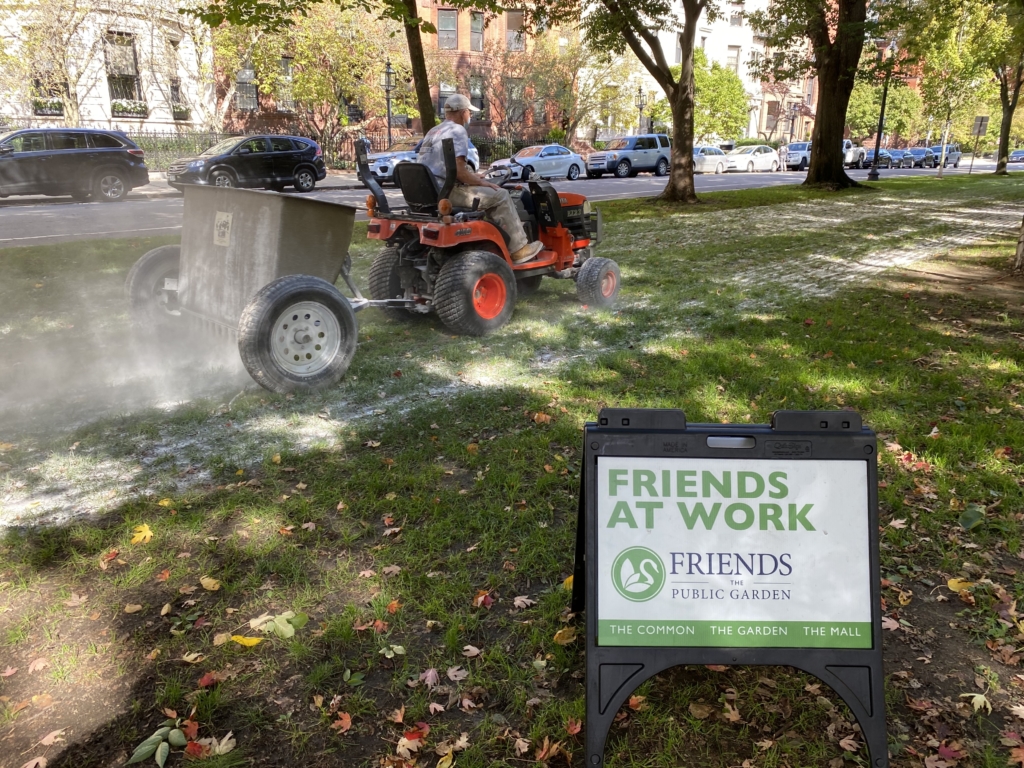
The Friends is applying limestone to the soil on the Mall, covering all the blocks from Arlington to Kenmore. Applying limestone is a safe, natural and commonly accepted means of lowering acidity in soils, helping to improve turf and soil health.
Why limestone?
The Friends has conducted soil sampling for the turf in each of our three parks: the Common, the Public Garden, and the Mall. The data reveals much about the elements, biology and their relationships to one another within the parks’ soil.
One of the more important components of soil analysis is pH, or how acidic/alkaline the soil environment is. The pH data we received is telling: all three parks are some factor below optimum pH values. The Mall, for instance, is the most acidic of the three parks, between 10x and 100x too acidic for many turf varieties. Like many adjustments to soil conditions, correcting pH is not an immediate fix, and requires a few seasons and perhaps a couple applications of limestone before the desired results are achieved.
Some interesting facts about limestone…
Limestone is a naturally occurring sedimentary rock that has an enormous diversity of uses. Chalk is a fine-textured version of limestone. It is used in building materials, in concrete, in floor tiles, stair treads, window sills, as a white pigment filler in paper, paint, rubber, and plastics and as we are using it, as a soil conditioner.

